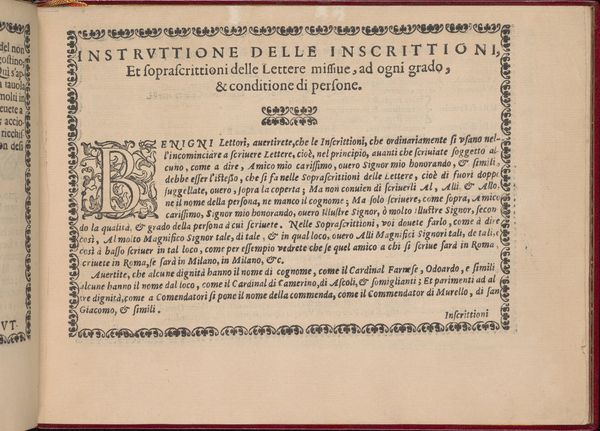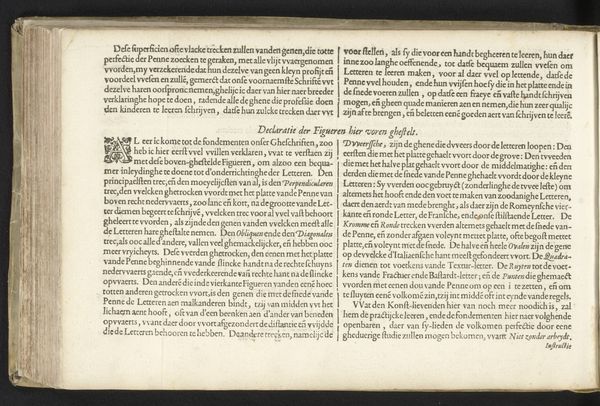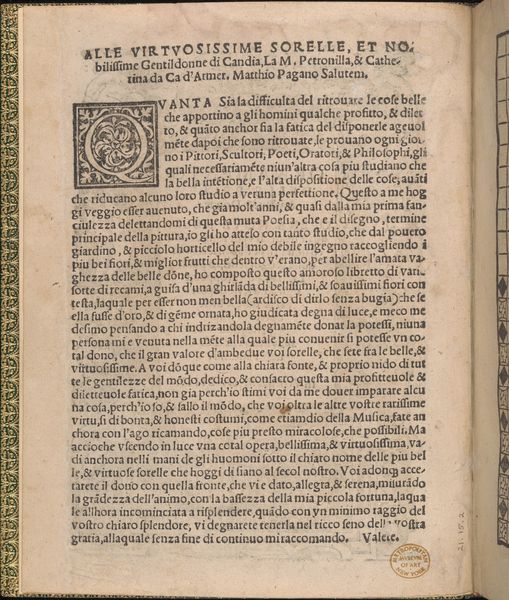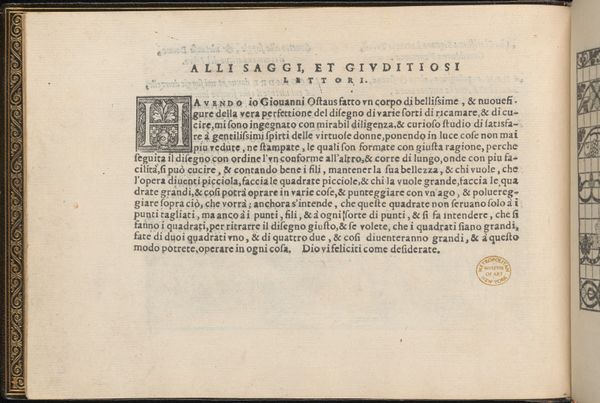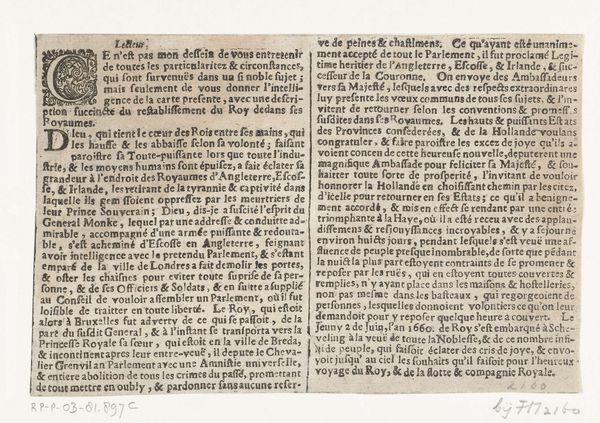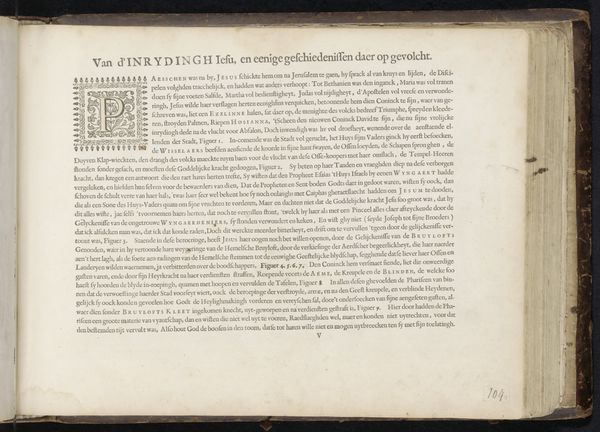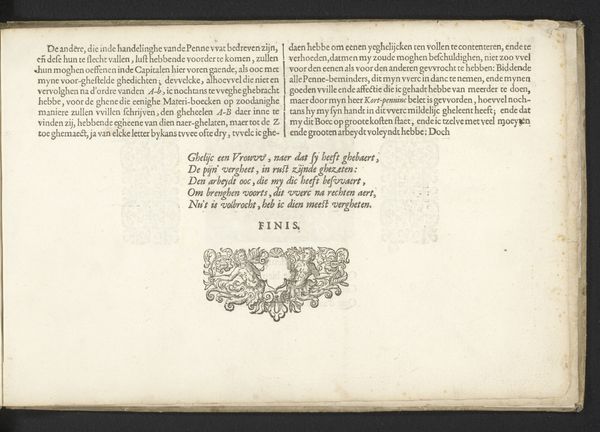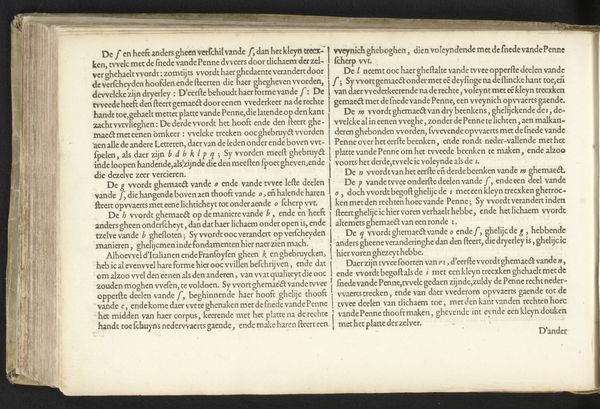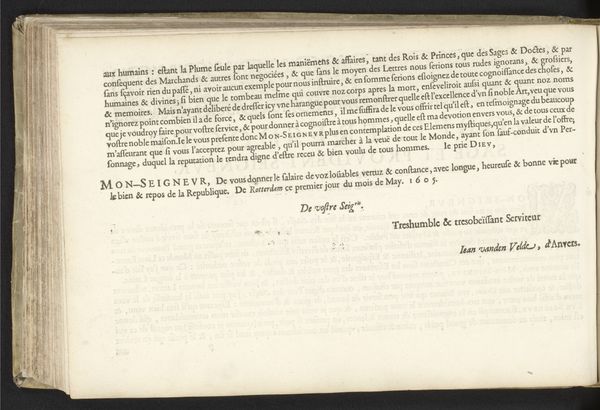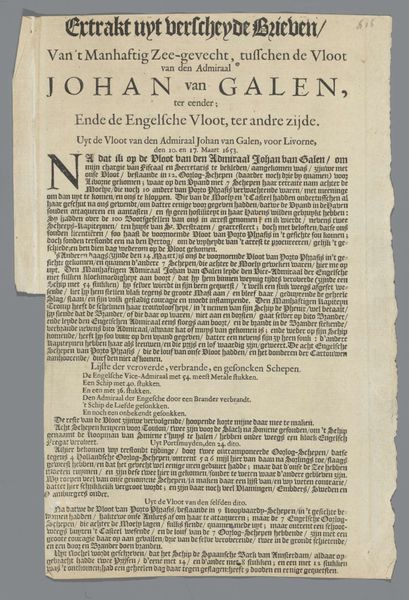
Ghirlanda: Di sei vaghi fiori scielti da piu famosi Giardini d'Italia, page 3 (recto) 1604
0:00
0:00
drawing, print, paper, typography, ink
#
drawing
# print
#
book
#
paper
#
typography
#
ink
#
italian-renaissance
Dimensions: Overall: 5 7/8 x 7 7/8 in. (15 x 20 cm)
Copyright: Public Domain
Curator: This open book presents “Ghirlanda: Di sei vaghi fiori scielti da piu famosi Giardini d'Italia, page 3 (recto)”, a print created by Pietro Paulo Tozzi in 1604. The location now is the Metropolitan Museum of Art. What strikes you upon viewing this intricate piece? Editor: Immediately, I'm struck by its textural density and the sheer labor involved in its production. Look at all of that tiny typography. You can almost feel the pressure of the printing press, and I am drawn to consider how such an artifact was produced and disseminated in 17th century Italy. Curator: I'm drawn to the floral borders surrounding the text. Garlands in Renaissance imagery symbolize virtue, honor, and even celebration. They transform the text block itself into a sort of symbolic wreath. Editor: The garland frame is more than decorative; it signifies the material transformation of knowledge into a commodity. Consider the resources—paper, ink, skilled labor—converging in this object. It begs the question: for whom was this garland of knowledge intended, and at what cost? Curator: The text suggests its universal appeal to "the great and small; the rich and poor; the nobles and commoners; the young and old; the learned and ignorant; the religious and secular." Perhaps a more aspirational sentiment than practical reality, but an attempt to democratize the value found in nature, as the flowers here symbolize, through typography. Editor: This resonates with my thinking. I wonder about the relationship between artisanal craftsmanship and emerging print technologies. While the floral garlands evoke natural beauty and timelessness, the letterpress is about reproduction, scale and distribution; labor becomes part of an industrialized process with an ability to educate or disseminate specific cultural values. Curator: Indeed, there's a tension between the unique handcrafted artistry suggested by the floral motifs, and the potential for mass production inherent in the printing process. It perhaps captures a moment of transition. Thank you. I’ve seen a richer dimension because of our conversation. Editor: The pleasure has been all mine. Examining art as evidence of its production reminds us of the people and resources behind it, hopefully fostering a critical understanding of what we value in visual form today.
Comments
No comments
Be the first to comment and join the conversation on the ultimate creative platform.
